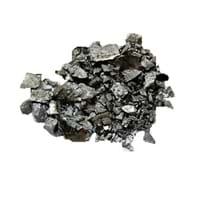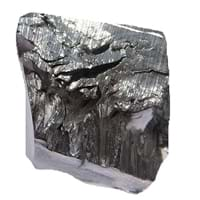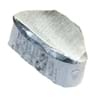Tin vs Lutetium
Periodic Table
Symbol
Sn
Lu
Group Number
14
4
Not Available
Period Number
5
6
Block
p block
f block
Element Family
Post-Transition
Lanthanide
CAS Number
7440315
99+
7439943
99+
Space Group Name
I41/amd
P63/mmc
Space Group Number
141.00
7
194.00
5
Facts
Interesting Facts
- In the list of most abundant element Tin is ranked 49th.
- Tin metal does not react with water as well as does not corrode in it.
- Metal dust of Lutetium element is highly explosive.
- Lutetium metal is corrosion resistance and acts stable in air.
Sources
Found in Minerals, Mining
Found in Minerals, Mining, Ores of Minerals
History
Who Discovered
Unknown
Georges Urbain and Carl Auer von Welsbach
Discovery
Before 3500 BC
In 1906
Abundance
Abundance In Universe
4 * 10-7 %
20
1 * 10-8 %
30
Abundance In Sun
~0.0000009 %
19
~0.0000001 %
26
Abundance In Meteorites
0.00 %
24
0.00 %
99+
Abundance In Earth's Crust
0.00 %
34
0.00 %
99+
Abundance In Oceans
0.00 %
26
0.00 %
99+
Abundance In Humans
0.00 %
13
Not Available
Uses
Uses & Benefits
- Tin-niobium alloy is used for producing superconducting magnets.
- Tin salt known as a tin II chloride, it is used as a mordant and as a reducing agent for dyeing calico and silk.
- Lutetium metal is used outside research. It has commercial uses like Industrial catalyst for cracking oil refineries of hydrocarbons .
Industrial Uses
Automobile Industry, Chemical Industry, Food Industry
NA
Medical Uses
Dentistry
NA
Other Uses
NA
Alloys
Biological Properties
Toxicity
Non Toxic
Low Toxic
Present in Human Body
Yes
No
In Blood
0.38 Blood/mg dm-3
10
Not Available
In Bone
1.40 p.p.m.
16
Not Available
Physical Properties
Melting Point
231.90 °C
99+
1,652.00 °C
19
Boiling Point
2,270.00 °C
99+
3,402.00 °C
19
Appearance
Physical State
Solid
Solid
Color
Silvery White
Silvery White
Luster
NA
Metallic
Hardness
Mohs Hardness
1.50
18
Not Available
Brinell Hardness
50.00 MPa
99+
893.00 MPa
10
Vickers Hardness
Not Available
1,160.00 MPa
8
Speed of Sound
2,730.00 m/s
32
Not Available
Optical Properties
Allotropes
Yes
No
α Allotropes
Grey Tin (alpha Tin, Tin Pest)
Not Available
β Allotropes
White Tin (Beta Tin)
Not Available
γ Allotropes
Rhombic Tin (gamma Tin)
Not Available
Chemical Properties
Chemical Formula
Sn
Lu
Isotopes
Known Isotopes
35
4
35
4
Electronegativity
Pauling Electronegativity
1.96
8
1.27
34
Sanderson Electronegativity
1.49
15
Not Available
Allred Rochow Electronegativity
1.72
4
1.14
28
Mulliken-Jaffe Electronegativity
2.21
3
Not Available
Allen Electronegativity
1.82
11
Not Available
Electropositivity
Pauling Electropositivity
2.04
99+
2.73
20
Ionization Energies
1st Energy Level
708.60 kJ/mol
33
523.50 kJ/mol
99+
2nd Energy Level
1,411.80 kJ/mol
99+
1,340.00 kJ/mol
99+
3rd Energy Level
2,943.00 kJ/mol
30
2,022.30 kJ/mol
99+
4th Energy Level
3,930.30 kJ/mol
99+
4,370.00 kJ/mol
28
5th Energy Level
7,456.00 kJ/mol
13
6,445.00 kJ/mol
21
Electrochemical Equivalent
1.11 g/amp-hr
99+
2.18 g/amp-hr
23
Electron Work Function
4.42 eV
16
3.30 eV
33
Other Chemical Properties
Ionization, Solubility
Anti Corrosion, Ionization, Radioactive Isotopes, Solubility
Atomic Properties
Atomic Number
50
99+
71
99+
Electron Configuration
[Kr] 4d10 5s2 5p2
[Xe] 6s2 4f14 5d1
Crystal Structure
Tetragonal (TETR)
Hexagonal Close Packed (HCP)
Crystal Lattice
TETR-Crystal-Structure-of-Tin.jpg#100
BCC-Crystal-Structure-.jpg#100
Atom
Number of Protons
50
99+
71
99+
Number of Neutrons
69
99+
104
30
Number of Electrons
50
99+
71
99+
Radius of an Atom
Atomic Radius
140.00 pm
38
174.00 pm
20
Covalent Radius
139.00 pm
99+
187.00 pm
20
Van der Waals Radius
217.00 pm
23
221.00 pm
22
Atomic Weight
118.71 amu
99+
174.97 amu
40
Atomic Volume
16.30 cm3/mol
32
17.78 cm3/mol
30
Adjacent Atomic Numbers
Valence Electron Potential
83.50 (-eV)
14
50.90 (-eV)
26
Lattice Constant
583.18 pm
7
350.31 pm
99+
Lattice Angles
π/2, π/2, π/2
π/2, π/2, 2 π/3
Lattice C/A Ratio
Not Available
1.59
10
Mechanical Properties
Density
Density At Room Temperature
7.37 g/cm3
99+
9.84 g/cm3
38
Density When Liquid (at m.p.)
6.99 g/cm3
34
9.30 g/cm3
22
Tensile Strength
Not Available
Not Available
Viscosity
Not Available
Not Available
Vapor Pressure
Vapor Pressure at 1000 K
0.00 (Pa)
17
0.00 (Pa)
33
Vapor Pressure at 2000 K
Not Available
3.18 (Pa)
11
Elasticity properties
Shear Modulus
18.00 GPa
36
27.20 GPa
26
Bulk Modulus
58.00 GPa
20
47.60 GPa
23
Young's Modulus
50.00 GPa
36
68.60 GPa
30
Poisson Ratio
0.36
8
0.26
21
Other Mechanical Properties
Ductile, Malleable
NA
Magnetic Properties
Magnetic Characteristics
Specific Gravity
7.31
99+
9.84
29
Magnetic Ordering
Diamagnetic
Paramagnetic
Electrical Properties
Electrical Property
Superconductor
Conductor
Resistivity
115.00 nΩ·m
28
582.00 nΩ·m
9
Electrical Conductivity
0.09 106/cm Ω
23
0.02 106/cm Ω
99+
Electron Affinity
107.30 kJ/mol
8
50.00 kJ/mol
21
Thermal Properties
Specific Heat
0.23 J/(kg K)
28
0.15 J/(kg K)
36
Molar Heat Capacity
27.11 J/mol·K
20
26.86 J/mol·K
24
Thermal Conductivity
66.80 W/m·K
25
16.40 W/m·K
99+
Critical Temperature
Not Available
Not Available
Thermal Expansion
22.00 µm/(m·K)
20
9.90 µm/(m·K)
40
Enthalpy
Enthalpy of Vaporization
290.40 kJ/mol
32
355.90 kJ/mol
22
Enthalpy of Fusion
7.03 kJ/mol
99+
18.70 kJ/mol
13
Enthalpy of Atomization
301.30 kJ/mol
35
398.00 kJ/mol
20
Standard Molar Entropy
51.20 J/mol.K
29
51.00 J/mol.K
30
|
||
|
||
|












